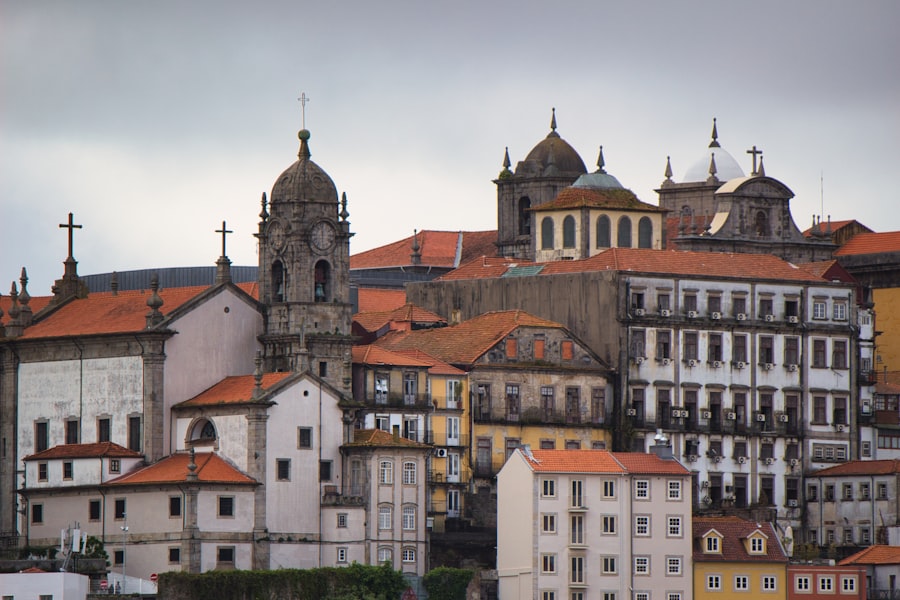Download links
How to install Manila Cathedral: A Historic Icon of Faith APK?
1. Tap the downloaded Manila Cathedral: A Historic Icon of Faith APK file.
2. Touch install.
3. Follow the steps on the screen.
Description
The Manila Cathedral, officially known as the Cathedral-Basilica of the Immaculate Conception, has a rich and storied history that dates back to the Spanish colonial period. The original structure was built in 1581, making it one of the oldest churches in the Philippines. The cathedral was constructed under the auspices of the Spanish colonial government, which sought to establish a strong Catholic presence in the archipelago.
The first iteration of the cathedral was a modest structure made of bamboo and nipa palm, reflecting the rudimentary building techniques of the time. However, as the Spanish influence grew, so did the ambition for a more permanent and grandiose edifice. Over the centuries, the Manila Cathedral has undergone numerous reconstructions and renovations, primarily due to natural disasters and wartime destruction.
The original church was destroyed by fire in 1583, leading to its first reconstruction. Subsequent earthquakes in 1645, 1863, and 1880 further damaged the structure, necessitating additional rebuilding efforts. Each reconstruction aimed not only to restore the cathedral but also to enhance its architectural grandeur.
The most significant transformation occurred in 1954 when the cathedral was rebuilt under the direction of architect Fernando Ocampo after being severely damaged during World War
Key Takeaways
- Manila Cathedral has a rich history dating back to the Spanish colonial period, making it one of the oldest churches in the Philippines.
- The architectural design of Manila Cathedral reflects a blend of different styles, showcasing its significance in the country’s architectural heritage.
- Throughout history, Manila Cathedral has stood witness to significant events in Philippine history, including the country’s independence and the visit of Pope John Paul II.
- The cathedral plays a crucial role in the religious and cultural identity of Filipinos, serving as a center for religious practices and traditions.
- Efforts to restore and preserve Manila Cathedral have been ongoing, ensuring that its historical and cultural significance is maintained for future generations.
Architectural Significance of Manila Cathedral
The architectural significance of Manila Cathedral lies in its unique blend of Romanesque and Gothic styles, which reflect both European influences and local adaptations. The cathedral’s façade is characterized by its grand entrance, adorned with intricate carvings and sculptures that depict various religious figures and motifs. The use of local materials, such as adobe and bricks, showcases the ingenuity of Filipino craftsmanship while maintaining a connection to European architectural traditions.
The cathedral’s bell tower, which rises majestically above the surrounding landscape, is another notable feature that exemplifies its architectural grandeur. Inside, the cathedral boasts a stunning array of stained glass windows that filter light into vibrant hues, creating an ethereal atmosphere for worshippers. The high vaulted ceilings and expansive nave are designed to evoke a sense of awe and reverence, drawing visitors into a spiritual experience.
The altar, intricately designed and adorned with religious iconography, serves as the focal point of the cathedral, inviting contemplation and prayer. The overall design of Manila Cathedral not only serves functional purposes but also embodies the cultural and spiritual aspirations of the Filipino people, making it a significant architectural landmark in Southeast Asia.
Manila Cathedral: A Witness to Philippine History

Throughout its existence, Manila Cathedral has stood as a silent witness to pivotal moments in Philippine history. From the arrival of Spanish colonizers to the struggle for independence, the cathedral has been at the heart of many historical events that shaped the nation. During the Spanish colonial period, it served as a center for religious and political activities, hosting important ceremonies such as royal proclamations and significant ecclesiastical events.
The cathedral was also a site for various religious processions that celebrated both local and Spanish traditions. The impact of World War II on Manila Cathedral cannot be overstated. As the city became a battleground between Japanese forces and American troops, the cathedral suffered extensive damage during air raids and ground assaults.
Despite this destruction, it remained a refuge for many civilians seeking solace amidst chaos. After the war, the cathedral was rebuilt not only as a place of worship but also as a symbol of hope and resilience for a nation emerging from conflict. Its walls have absorbed countless stories of joy, sorrow, and faith, making it an enduring testament to the Filipino spirit throughout history.
The Role of Manila Cathedral in Filipino Faith and Culture
| Aspect | Metrics |
|---|---|
| Historical Significance | Established in 1571 by Spanish conquistadors |
| Architectural Beauty | Features a combination of Romanesque, Renaissance, and Baroque styles |
| Religious Importance | Center of Catholic faith in the Philippines |
| Cultural Events | Hosts religious ceremonies, concerts, and art exhibits |
| Tourist Attraction | Draws visitors for its historical and cultural significance |
Manila Cathedral plays a crucial role in shaping Filipino faith and culture, serving as a spiritual home for millions of Catholics in the Philippines. As one of the most important religious sites in the country, it hosts numerous liturgical celebrations throughout the year, including Christmas Masses, Holy Week observances, and other significant religious events. These gatherings foster a sense of community among worshippers and reinforce their shared beliefs and values.
The cathedral’s prominence in these celebrations underscores its importance as a focal point for Catholic devotion in Manila. Beyond its religious functions, Manila Cathedral is also deeply intertwined with Filipino cultural identity. It serves as a venue for various cultural events that celebrate Filipino heritage, including concerts, art exhibits, and community gatherings.
The cathedral’s architecture and history are often incorporated into educational programs that aim to instill pride in Filipino culture among younger generations. Furthermore, its location within Intramuros—a historic district that reflects Manila’s colonial past—adds layers of cultural significance to the cathedral as it stands amidst other historical landmarks.
Restoration and Preservation Efforts of Manila Cathedral
The restoration and preservation efforts of Manila Cathedral have been ongoing since its inception, reflecting a commitment to maintaining its historical integrity while adapting to contemporary needs. After World War II, significant restoration work was undertaken to rebuild the cathedral to its former glory. This involved meticulous attention to detail in replicating original designs while incorporating modern materials that would ensure durability against future disasters.
The restoration process was not merely about physical reconstruction; it also aimed to revive the spiritual essence of the cathedral. In recent years, preservation efforts have focused on maintaining both the structural integrity and aesthetic beauty of Manila Cathedral. This includes regular maintenance checks to address wear and tear caused by environmental factors such as humidity and pollution.
Additionally, initiatives have been launched to educate visitors about the cathedral’s history and significance through guided tours and informational displays. These efforts ensure that future generations can appreciate not only the architectural beauty of Manila Cathedral but also its profound historical and cultural importance.
Manila Cathedral: A Center for Religious Pilgrimage

As a center for religious pilgrimage, Manila Cathedral attracts thousands of devotees each year who seek spiritual renewal and connection with their faith. Pilgrimages to this sacred site often coincide with significant religious events such as Feast Days or special liturgical celebrations. During these times, the cathedral becomes a bustling hub of activity as pilgrims gather to participate in Masses, novenas, and other devotional practices.
This influx of visitors highlights the cathedral’s role as a spiritual beacon for Catholics not only from Manila but from various regions across the Philippines. The significance of Manila Cathedral as a pilgrimage site is further enhanced by its historical associations with various saints and religious figures revered by Filipinos. Many pilgrims come seeking intercession from these figures or to fulfill personal vows made during times of hardship or gratitude.
The experience of pilgrimage at Manila Cathedral is often described as transformative; individuals leave with renewed faith and a deeper understanding of their spiritual journey. This aspect of pilgrimage underscores how deeply intertwined faith is with Filipino culture and identity.
Manila Cathedral: A Symbol of Resilience and Faith
Manila Cathedral stands as a powerful symbol of resilience and faith for Filipinos across generations. Its ability to withstand numerous calamities—be it natural disasters or wartime destruction—mirrors the tenacity of the Filipino people themselves. Each reconstruction effort has not only restored its physical form but has also reinforced its role as a sanctuary for hope amidst adversity.
The cathedral’s enduring presence serves as a reminder that faith can prevail even in the face of overwhelming challenges. Moreover, Manila Cathedral embodies collective memories of struggle and triumph within Filipino society. It has witnessed countless moments of joy during celebrations such as weddings and baptisms while also providing solace during times of mourning and loss.
This duality reflects the complexities of human experience—joy intertwined with sorrow—and reinforces how faith can be both a source of strength and comfort. As such, Manila Cathedral transcends its role as merely a place of worship; it is an emblematic representation of resilience that resonates deeply within the hearts of Filipinos.
The Future of Manila Cathedral: Continuing Its Legacy
Looking ahead, the future of Manila Cathedral is poised to continue its legacy as an enduring symbol of faith, culture, and resilience in Philippine society. Ongoing restoration efforts will ensure that this historic landmark remains well-preserved for future generations while adapting to contemporary needs without compromising its historical integrity. As urban development continues around Intramuros, there is an opportunity for Manila Cathedral to serve as a focal point for cultural tourism that celebrates both its architectural beauty and rich history.
By instilling a sense of pride in their heritage and encouraging active participation in religious life, future generations can carry forward the legacy that Manila Cathedral represents. As it continues to serve as a center for worship and community gatherings, Manila Cathedral will undoubtedly remain an integral part of Filipino identity—a testament to faith that endures through time.
FAQs
What is the Manila Cathedral?
The Manila Cathedral, also known as the Metropolitan Cathedral of the Immaculate Conception, is a Roman Catholic basilica located in the Intramuros district of Manila, Philippines.
When was the Manila Cathedral built?
The original Manila Cathedral was built in 1581, but it has been destroyed and rebuilt several times due to natural disasters and wars. The current structure was completed in 1958.
What is the architectural style of the Manila Cathedral?
The Manila Cathedral features a combination of different architectural styles, including Baroque, Neo-Romanesque, and Neo-Byzantine influences.
What is the significance of the Manila Cathedral?
The Manila Cathedral is a significant religious and cultural landmark in the Philippines. It has been the site of many important events in the country’s history, including the papal visits of Pope Paul VI, Pope John Paul II, and Pope Francis.
Is the Manila Cathedral open to the public?
Yes, the Manila Cathedral is open to the public for worship, prayer, and guided tours. Visitors are welcome to explore the cathedral’s interior and learn about its history and significance.





